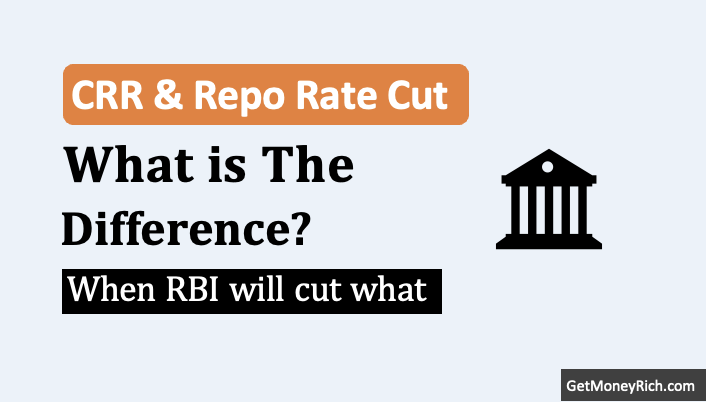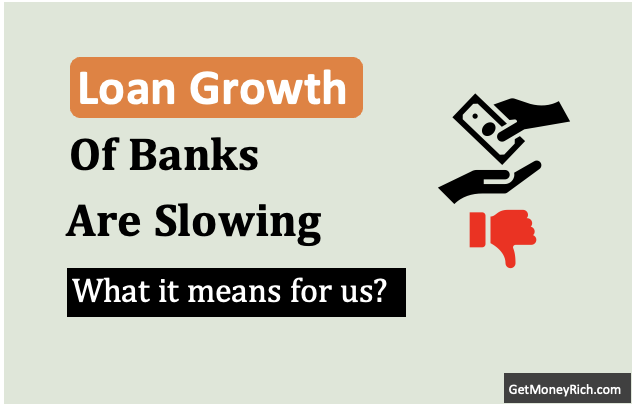Summary Points:
- When RBI cuts CRR what it means for banks.
- A 0.5% CRR cut freed up Rs.1.16 lakh crore for banks in Dec’24.
- Post CRR cut banks can lend more, boosting their profits.
- PSU banks might benefit more than private ones.
- Bank stocks rose initially but could falter later.
- Economy gets a push if lending is smart.
- Cheaper loans possible for us down the line.
Introduction
On December 6, 2024, The Economic Times ran a story titled “RBI cuts CRR by 50bps: 7 ways in which banks will benefit” (you can check it out here). RBI decided to slash the Cash Reserve Ratio (CRR) by 50 basis points, bringing it down from 4.5% to 4%. For people who are conversant about CRR, to them this news piece might sounds a jargon. But as a stock investor, I think we must know why this move matters to banks, their businesses, and even their stock prices. So allow me to explain in a simple way the effect of CRR cuts on banks and their stocks
I’m sure it will be a helpful post for investors who like Bank stocks, so please read this article through to the end.
What Exactly is This CRR?
Just for example, consider yourself as a owner of a grocery store in your city.
Say, you’ve got Rs.50,000 in cash from your daily sales. But you know that you can’t spend all of it on new stocks or use it for your personal use. Why? Because you need to keep some cash aside for emergencies and other unplanned expenses. For example, if a few customers turns up to return some items, you will need cash at that time. Also, if your favourite supplier requests upfront payment for this time, you will again need cash. So this is a hypothetical scenario.
Now, imagine that instead of your grocery store, there is a bank.
The CRR is the portion of their total deposits (the money we park in our savings accounts) that they have to keep locked up with the RBI. It’s like a safety net. For banks the CRR limit is not an option. It is a rule made by RBI and all banks have to follow it, they can’t dodge.
Before December 6, 2024, this CRR was set at 4.5%. That means for every Rs.100 we’ve deposited, the bank had to keep Rs.4.50 with the RBI as the CRR. This leaves the bank with only Rs.95.50 to do business with. They can use this money for lending out, investing it, whatever.
But when the RBI cut it to 4%, that mandatory reserve dropped to Rs.4 per Rs.100. It might look like a small change, but when we’ll scale that up to the crores and crores sitting in India’s banking system, this small 0.5% difference becomes a big corpus.
As reported in the Economic Times news piece, this small 0.5% move freed up around Rs.1.16 lakh crore for banks. It is a massive amount of money waiting to be distributed as loans causing a lot of economic activity.
More Cash in Hand: So What Does It Mean for Banks?
So, what happens when banks suddenly have more cash in hand?
For banks, this extra Rs.1.16 lakh crore means they can lend more to businesses, homebuyers, car buyers, etc. More lending means more interest income for the banks. Lending is the bread and butter of a bank’s business, and if lending will increase it will bring more profits for the banks.
But there is also a catch here. When there is extra cash with banks, they then to disburse loans more casually.
Good banks do not just lend money, they do it smartly. A few years back, we use to hear a lot of news related to NPAs. Some banks got a bit too excited with extra cash and ended up with bad loans. But these days, big public sector banks like SBI and PNB have become more cautious while lending because of their baggage of NPAs.
The Economic Times article points out that PSU banks could see a bigger boost from this CRR cut because they’ve been sitting on tighter liquidity. More cash might just give them the confidence to open their vaults a little wider.
Now, private banks like HDFC or ICICI? They’re usually quicker on their feet, already lending aggressively. For them, this extra liquidity is like icing on the cake. Private banks will use this cash to to push into new areas, like small business loans or personal credit, where the margins are juicy.
The Ripple Effect on Bank Stocks
What a CRR cut and heightened liquidity means for the stock market?
When banks get more cash to lend, their profits should go up. More loans, more interest, happier balance sheets and Investors love that story.
After the RBI’s announcement on December 6 2024, you can bet that bank stocks became active. Between 13-Nov-2024 and 16-Dec-2024, the Nifty Bank index rose by about 7%.
But it is also true that stock prices would not remain excited for long just because the CRR cut has been announced. If the economy slows down and loan demand dries up, that rally could fizzle out fast. Something very similar happened in December 2024 as well. After the rise between 13-Nov and 16-Dec, the Nifty went on the correction more after that. Between 16-Dec-2024 and 11-Mar-2025, the Nifty Index fell by almost 10%.
It is also true that the banks benefit only if they deploy this money wisely. For example, in 2020-21, when the RBI pumped in liquidity during COVID, many banks choose to just park the extra cash in safe investments instead of lending. Why? Because at that time the whole was slipping into a forced recession.
In the short term, a CRR cut can give bank stocks a nice little push. In the long Long term, the bank stock’s performance is more dependent on how the economy plays out, GDP growth, inflation, global trade tensions. A combination of all these factors will effect the stock price.
Beyond Profits
This CRR cut isn’t just about banks making more money. In fact, it is more about what the RBI is trying to tell us.
Late 2024 was a tricky time, GDP growth had slowed to 5.4% in Q2 (way below the RBI’s 7% forecast). The liquidity in the system was also tight. So, by cutting the CRR, the RBI was basically saying, “Banks, you have our support, go out there and boost the economy by lending more money.”
It’s a signal to get credit flowing to businesses and consumers, especially when things like US tariffs or global slowdowns were making everyone nervous.
For us, CRR cut would eventually result in cheaper loans down the line as banks have more money with them and the want them to get disbursed as loans faster. That’s a win for anyone who wants to make a big purchase using bank loans, like a home, car, etc.
Conclusion
The RBI’s CRR cut can be a big deal for banks.
More cash in their hands means more lending power, which could eventually mean more profits.
High profits can lead to high EPS which will lower the P/E ratio of the bank. A falling PE in rising EPS scenario is a big buy signal for investors. As a result the demand for the bank stocks goes up leading to a small bull run.
I hope I was able to give you the clarity on how CRR cut by RBI can effect the bank stocks in general. Please give me you feedback in the comments section below.


